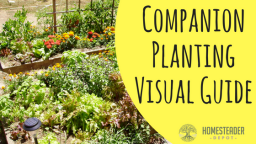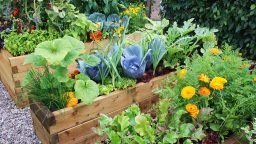Gardeners are often described as an optimistic group of people. No doubt, with each seed or plant that gardeners put into the soil, they hope to have something to harvest later in the season. A variety of factors go into growing a successful garden that yields a bountiful harvest. Some variables, such as the weather, are beyond a gardener’s control. On the other hand, there are numerous growing tips and techniques that can help your garden produce a bumper crop of vegetables. Companion planting is one of those techniques.
Native Americans planted what is referred to as “three sisters” gardens. Although the term “companion planting” may not have been used when those early three sisters’ gardens were planted, the concept is the same. Corn, beans and squash were the trio of plants that made up the three sisters garden. That same collection of plants is often used by gardeners today who recognize the beneficial impact these plants can have on each other. The success of companion planting could well be the reason it remains a popular gardening technique among today’s rural and urban gardeners.
Companion planting is a simple concept. It involves pairing plants together to increase productivity, assist with pollination, repel pests and attract beneficial insects. In addition to those benefits, with appropriate pairings, your companion plants can provide shade for some of the vegetables in your garden. Companion planting helps plants grow and produce vegetables to their maximum potential by improving the condition of the soil. For example, beans help trap nitrogen in the soil and therefore are ideal companion plants for vegetables that need nitrogen-rich soil.
Anyone concerned with natural forms of pest control should include insect repelling plants in their garden. Companion planting is considered to be an effective means of pest control. Once again, using beans as an example, when planted as a companion to corn, they can serve as attractors for beneficial insects that prey on pests that would be detrimental to corn. The bean vine winding itself around the corn-stalk can function as a deterrent for raccoons. There is also another benefit to planting beans as a companion plant to corn. As the vines wind around the corn-stalk, they strengthen it and help increase its resistance to potentially damaging winds.
If you have a small amount of space available for planting a garden, companion planting is ideal for a compact garden area. Companion planting is also an excellent way to design a raised bed garden. There are charts available online and in magazines to assist you in finding the proper plant pairings. There are also books that are devoted solely to the topic of companion planting. Not all plants are cordial or complementary to each other. In fact, there are some plants that should never be planted too close together. If you use companion planting charts and group the appropriate plants together, your garden may yield an abundance of vegetables that exceeds what you originally hoped for.
If you liked this, you might also enjoy…



